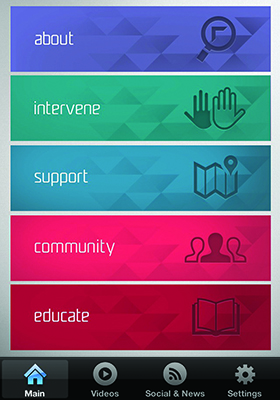Degendering washrooms isn’t hard — once the will is there, argues Tierney
Gender-neutral washrooms are becoming a larger talking point on campuses around the country. But as the demand for accessible spaces grows, supply does not, advocates say.
On the University of Ottawa campus, some of the gender-neutral washrooms were created as activist spaces as much as practical ones, without the administration’s approval.
Cara Tierney is a part-time professor in the visual arts department who worked to degender washrooms in the visual arts building on their own initiative.
Tierney, along with a student, presented a petition to degender some of the washrooms in the visual arts building at a departmental meeting in March 2018. The petition was signed by around 95 per cent of students who use the building and was embraced by the professors.
On two floors in the visual arts building, Tierney degendered the washrooms by changing the signage. Instead of a man and woman symbol, the washrooms now have a toilet bowl, and a toilet bowl and urinal on the sign, indicating what is in the washroom instead of who should use it. The signs were installed in September 2018.
Changing signage is all that really has to be done, Tierney explained, though there are design changes that can be made.
Tierney also put in signs saying that all genders are welcome in these washrooms and that if people wanted gendered washrooms, they are still available in the building.
“Ultimately the goal is to not use signage on the door to talk about who gets to be in that room, but to use signage in a door to say what is in that room, to be descriptive,” Tierney said. “And then people can self-identify and not feel like passage into that space is governed by a particular gender expression.”
Tierney said it cost about $120 to degender the bathrooms in the visual arts building, and that was only because they outsourced the sign-making. The university could do it for less, Tierney said, because they can make their own signs on campus.
“What does equity look like? It’s not simply turning an accessible washroom into a universal washroom, that’s not a great solution, but that tends to be the retrofit people are going with,” Tierney said.
In an email to the Fulcrum, the University of Ottawa Students’ Union’s Pride Centre echoed the sentiment, stating that one of their first goals is to push for more gender-neutral washrooms and create an up-to-date list.
The university administration stated in an email that there are “189 individual and non-gendered toilets in 63 U of O buildings” but did not provide further information on the ratio of individual to specifically non-gendered toilets or on signage.
While individual washrooms are one solution, they are far from the best or a meaningful one, as they can create a sense of exclusivity rather than inclusivity.
Across the street from the U of O, the new Ottawa Art Gallery has gender-neutral washrooms. In addition to degendered signage, the gallery has also made accessible design changes, using floor-to-ceiling stalls to eliminate gaps and putting stalls around the urinals.
Tierney pointed out that degendered washrooms are not only more accessible for gender non-conforming individuals, but for parents of young children and chair users who work with assistants of a different gender, as just two examples.
Tierney even gave an example of a cisgender couple who were excited to continue their conversation in the washroom instead of putting it on pause while one waited outside.
“There’s a whole host of reasons why these changes are progressive far beyond a relationship to the trans community,” Tierney said.
When asked about the university’s facilities, Tierney said the campus could do better.
“There aren’t options for trans, nonbinary, and two-spirit students. Any changes they have made are minimal and often poorly done,” said Tierney. “The campus could stand to be a little more proactive in making these changes, and they’re really basic and simple.”
Tierney noted university hierarchical bureaucracy is the biggest challenge to creating accessible public spaces on campus. They called into question systemic transphobic attitudes and governance which stalls progress.
“Processing these changes often needs to move through multiple levels of bureaucracy and can easily be slowed or halted when individuals in positions of power have transphobic attitudes because they haven’t taken the time to think about, do the research, learn about trans identities, challenge their own bias and conditioning as to why they are scared to change a sign on a door, or create new kinds of spaces,” Tierney said. There is still a lot of destigmatizing that needs to go on, they argued.
So far, Tierney has heard nothing from the administration about the degendered washrooms.
When Tierney presented the petition, the department put forward two motions: one to pass the motion up the chain of administration, and a second to make the changes immediately
As a resource to learn more about gender-neutral washrooms, Tierney recommended the initiative Stalled! which was created to address design, policy, and cultural attitude issues surrounding gender-neutral washrooms.





